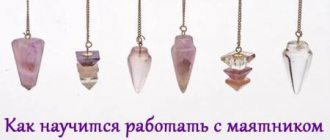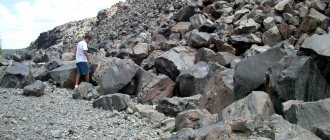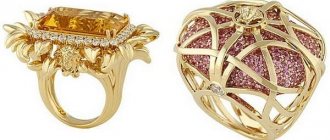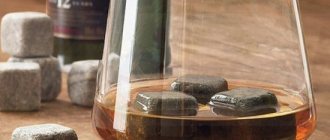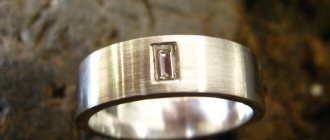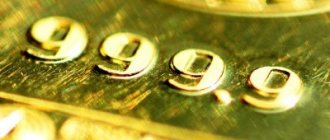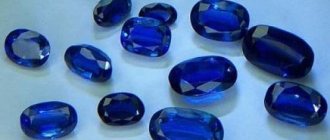| Lithium | |
| Atomic number | 3 |
| Appearance of a simple substance | Soft metal, silvery white |
| Properties of the atom | |
| Atomic mass (molar mass) | 6.941 a. e.m. (/mol) |
| Atomic radius | 155 |
| Ionization energy (first electron) | 519.9(5.39) kJ/mol () |
| Electronic configuration | [He] 2s1 |
| Chemical properties | |
| Covalent radius | 163 |
| Ion radius | 68 (+1e) |
| Electronegativity (Pauling) | 0,98 |
| Electrode potential | -3.06V |
| Oxidation states | 1 |
| Thermodynamic properties of a simple substance | |
| Density | 0,534 /³ |
| Molar heat capacity | 24.86 /(mol) |
| Thermal conductivity | 84,8 /(·) |
| Melting temperature | 453,69 |
| Heat of Melting | 2.89 kJ/mol |
| Boiling temperature | 1613 |
| Heat of vaporization | 148 kJ/mol |
| Molar volume | 13.1 ³/mol |
| Crystal lattice of a simple substance | |
| Lattice structure | cubic body-centered |
| Lattice parameters | 3,490 |
| c/a ratio | — |
| Debye temperature | 400 |
| Li | 3 |
| 6,941 | |
| [He]2s1 | |
| Lithium | |
Lithium
- a chemical element of the main subgroup of the first group, the second period of the periodic system of chemical elements of D.I. Mendeleev, with atomic number 3. Denoted by the symbol
Li
(Lithium).
The elemental substance lithium
(CAS number: 7439-93-2) is a soft alkali metal with a silvery-white color.
Receipt
Currently, to obtain lithium metal, its natural minerals are either decomposed with sulfuric acid (acid method), or sintered with CaO or CaCO3 (alkaline method), or treated with K2SO4 (salt method), and then leached with water. In any case, poorly soluble lithium carbonate Li2CO3 is isolated from the resulting solution, which is then converted into LiCl chloride. Electrolysis of the lithium chloride melt is carried out in a mixture with KCl or BaCl2 (these salts serve to lower the melting point of the mixture). The resulting lithium is subsequently purified by vacuum distillation.
Place of Birth
In nature, lithium is found in saline solutions (groundwater). Solid sources are often located in pegmatite ores. Minerals: spodumene, lepidolite, elbaite, yadarite.
There are 16 deposits in Russia, but no production is taking place.
World deposits:
- Bolivia;
- Argentina;
- Chile;
- China.
It’s sad: in our country, the demand for lithium-ion batteries is covered by Chinese imports. Or we could produce it ourselves...
Physical properties
Schematic representation of a lithium atom.
Lithium is a silvery-white metal, soft and ductile, harder than sodium but softer than lead. It can be processed by pressing and rolling.
At room temperature, lithium metal has a body-centered cubic lattice (coordination number 8), which upon cold processing transforms into a cubic close-packed lattice, where each atom having a double cuboctahedral coordination is surrounded by 12 others. Below 78 K, the stable crystal form is a hexagonal close-packed structure in which each lithium atom has 12 nearest neighbors located at the vertices of a cuboctahedron.
Of all the alkali metals, lithium has the highest melting and boiling points (180.54 and 1340 °C, respectively), and it has the lowest density at room temperature of all metals (0.533 g/cm³, almost half the density of water).
The small size of the lithium atom leads to the appearance of special properties of the metal. For example, it mixes with sodium only at temperatures below 380 ° C and does not mix with molten potassium, rubidium and cesium, while other alkali metal pairs mix with each other in any ratio.
Carmine red coloration of flame with lithium salts
Production
There are a couple of challenges in lithium brine mining - geography and reliability.
The brine is pumped into “pools” - special ponds, where the content of the element is concentrated by natural evaporation. You need a constantly high temperature (geography) and time - the process takes up to a year. Next, the concentrated brine (1-2% Li) is sent to a chemical plant for processing.
Solid sources are developed using traditional drilling and processing methods.
In the world, four producers control 85% of production (the main ones are Argentina and Chile).
For your information: the largest lithium deposit is in Bolivia; This is the salt marsh of Uyuni. 70% of the world's industrial reserves of the metal are located there.
Chemical properties
Alkali metal, unstable in air. Lithium is the least active alkali metal; it practically does not react with dry air (and even dry oxygen) at room temperature.
In humid air it slowly oxidizes, turning into Li3N nitride, LiOH hydroxide and Li2CO3 carbonate. When heated in oxygen, it burns, turning into oxide Li2O. There is an interesting feature that in the temperature range from 100 °C to 300 °C, lithium is covered with a dense oxide film and does not oxidize further.
In 1818, the German chemist Leopold Gmelin established that lithium and its salts color the flame carmine red, this is a qualitative sign for the determination of lithium. The combustion temperature is about 300 °C. Combustion products irritate the mucous membrane of the nasopharynx.
Reacts calmly, without explosion or fire, with water, forming LiOH and H2. It also reacts with ethyl alcohol (forming an alcoholate), with ammonia and with halogens (with iodine - only when heated).
Lithium is stored in petroleum ether, paraffin, gasoline and/or mineral oil in hermetically sealed tin boxes. Lithium metal causes burns if it comes into contact with the skin, mucous membranes and eyes.
Lithium isotopes
Natural lithium consists of two stable isotopes: 6Li (7.5%) and 7Li (92.5%); In some lithium samples, the isotopic ratio may be greatly disturbed due to natural or artificial isotope fractionation. This should be kept in mind when performing precise chemical experiments using lithium or its compounds. Lithium has 7 artificial radioactive isotopes and two nuclear isomers (4Li - 12Li and 10m1Li - 10m2Li, respectively). The most stable of these, 8Li, has a half-life of 0.8403 s. The exotic isotope 3Li (triproton) does not appear to exist as a bound system.
7Li is one of the few isotopes that arose during primordial nucleosynthesis (that is, shortly after the Big Bang). The formation of the element lithium in stars is possible through the nuclear reaction of “cleavage” of heavier elements.
Biological significance
The element was found among the permanent components in living organisms. In plants, it increases resistance to various diseases. The substance enhances the photochemical activity of chloroplasts in tomato foliage and the synthesis of nicotine in tobacco.
In the human body, lithium is produced primarily in the kidneys, but is also found in the thyroid gland, liver, heart, lungs and intestines. This element is involved in important processes of the human body:
- normalizes fat and carbohydrate metabolism;
- strengthens the immune system;
- prevents allergic reactions from developing;
- reduces nervous excitability.
In large quantities, the substance reduces the level of serotonin in the brain. If the sodium content in the body is high, lithium drugs are prescribed with caution, since the drugs can be hazardous to health and worsen kidney condition.
Geochemistry of lithium
According to its geochemical properties, lithium belongs to the large-ion lithophile elements, including potassium, rubidium and cesium. The lithium content in the upper continental crust is 21/t.
The main lithium minerals are lepidolite mica - KLi1.5Al1.5[Si3AlO10] (F, OH)2 and spodumene pyroxene - LiAl [Si2O6]. When lithium does not form independent minerals, it isomorphically replaces potassium in widespread rock-forming minerals.
Lithium deposits are confined to rare-metal granite intrusions, in connection with which lithium-bearing pegmatites or hydrothermal complex deposits also develop, containing tin, tungsten, bismuth and other metals. It is worth especially noting the specific ongonite rocks - granites with igneous topaz, high fluorine and water content, and exceptionally high concentrations of various rare elements, including lithium.
Another type of lithium deposits is the brines of some highly saline lakes.
Of four percent
The history of the discovery of lithium began with... mathematics. Chemist Arfvedson analyzed a mineral from the Uto mine. The scientist determined that it is an ordinary aluminosilicate, and its content of aluminum, silicon and oxygen is 96%. The persistent chemist wondered what happened to the remaining 4%. By separating the main components and dissolving the residue, he obtained a solution with alkaline properties. It was logical to assume that a new element had been discovered.
The description of the mineral from which the new element was extracted is the words: “ordinary cobblestone.” That’s why they called the new metal lithium (litos in Latin for stone).
Application
Thermoelectric materials
An alloy of lithium sulfide and copper sulfide is an effective semiconductor for thermoelectric converters (emf about 530 μV/K).
Chemical current sources
Lithium is used in the anodes of chemical power sources (batteries, for example lithium-chlorine batteries) and galvanic cells with a solid electrolyte (for example, lithium-chrome-silver, lithium-bismuthate, lithium-copper oxide, lithium-manganese dioxide, lithium-lead iodine, lithium-iodine, lithium -thionyl chloride, lithium vanadium oxide, lithium fluoride, lithium sulfur dioxide elements), working on the basis of non-aqueous liquid and solid electrolytes (tetrahydrofuran, propylene carbonate, methyl formate, acetonitrile).
Lithium cobaltate and lithium molybdate have shown better performance properties and energy capacity as the positive electrode of lithium batteries.
Lithium hydroxide is used as one of the components for preparing the electrolyte of alkaline batteries. Adding lithium hydroxide to the electrolyte of traction iron-nickel, nickel-cadmium, nickel-zinc batteries increases their service life by 3 times and capacity by 21% (due to the formation of lithium nickelates).
Lithium aluminate is the most effective solid electrolyte (along with cesium beta alumina).
Rocket fuel
Theoretical characteristics of rocket fuels formed by lithium with various oxidizers.
Oxidizer
| Oxidizer | Specific thrust (P1, sec) | Combustion temperature °C | Fuel density g/cm3 | Speed increase, ΔVid, 25, m/sec | Weight fuel content % |
| Fluorine | 378.3 sec | 5350 °C | 0,999 | 4642 m/s | 28 % |
| Tetrafluorohydrazine | 348.9 sec | 5021 °C | 0,920 | 4082 m/s | 21,07 % |
| ClF3 | 320.1 sec | 4792 °C | 1,163 | 4275 m/s | 24 % |
| ClF5 | 334 sec | 4946 °C | 1,128 | 4388 m/s | 24,2 % |
| Perchloryl fluoride | 262.9 sec | 3594 °C | 0,895 | 3028 m/s | 41 % |
| Fluorine oxide | 339.8 sec | 4595 °C | 1,097 | 4396 m/s | 21 % |
| Oxygen | 247.1 sec | 3029 °C | 0,688 | 2422 m/s | 58 % |
| Hydrogen peroxide | 270.5 sec | 2995 °C | 0,966 | 3257 m/s | 28,98 % |
| N2O4 | 239.7 sec | 3006 °C | 0,795 | 2602 m/s | 48 % |
| Nitric acid | 240.2 sec | 3298 °C | 0,853 | 2688 m/s | 42 % |
Laser materials
Lithium fluoride single crystals are used for the manufacture of highly efficient (80% efficiency) free color center lasers and for the manufacture of optics with a wide spectral bandwidth.
Oxidizing agents
Lithium perchlorate is used as an oxidizing agent.
Flaw detection
Lithium sulfate is used in flaw detection.
Pyrotechnics
Lithium nitrate is used in pyrotechnics.
Alloys
Lithium alloys with silver and gold, as well as copper, are very effective solders. Lithium alloys with magnesium, scandium, copper, cadmium and aluminum are new promising materials in aviation and astronautics. Based on lithium aluminate and silicate, ceramics have been created that harden at room temperature and are used in military technology, metallurgy, and, in the future, in thermonuclear energy. Glass made from lithium aluminum silicate, strengthened by silicon carbide fibers, has enormous strength. Lithium is very effective in strengthening lead alloys and giving them ductility and resistance to corrosion.
Electronics
Lithium cesium triborate is used as an optical material in radio electronics. Crystalline lithium niobate LiNbO3 and lithium tantalate LiTaO3 are nonlinear optical materials and are widely used in nonlinear optics, acousto-optics and optoelectronics. Lithium is also used to fill gas-discharge metal halide lamps.
Metallurgy
In ferrous and non-ferrous metallurgy, lithium is used to deoxidize and increase the ductility and strength of alloys. Lithium is sometimes used to recover rare metals using metallothermy methods.
Aluminum metallurgy
Lithium carbonate is the most important auxiliary substance (added to the electrolyte) in aluminum smelting and its consumption is growing every year in proportion to the volume of global aluminum production (lithium carbonate consumption is 2.5-3.5 kg per ton of aluminum smelted).
Aluminum alloying
The introduction of lithium into the alloying system makes it possible to obtain new aluminum alloys with high specific strength.
The addition of lithium reduces the density of the alloy and increases the elastic modulus. With a lithium content of up to 1.8%, the alloy has low resistance to stress corrosion, and at 1.9% the alloy is not prone to stress corrosion cracking. An increase in lithium content to 2.3% increases the likelihood of formation of looseness and cracks. In this case, the mechanical properties change: the limits of strength and fluidity increase, and the plastic properties decrease.
The most well-known alloying systems are Al-Mg-Li (for example, alloy 1420, used for the manufacture of aircraft structures) and Al-Cu-Li (for example, alloy 1460, used for the manufacture of containers for liquefied gases).
Nuclear energy
The 6Li and 7Li isotopes have different nuclear properties (thermal neutron absorption cross section, reaction products) and their scope is different. Lithium hafniate is part of a special enamel intended for the disposal of high-level nuclear waste containing plutonium
Lithium-6 (fusion)
Used in thermonuclear energy.
When 6Li nuclide is irradiated with thermal neutrons, radioactive tritium 31H (T) is obtained:
63Li+ 10n
= 31H + 42He.
Thanks to this, lithium-6 can be used as a replacement for radioactive, unstable and inconvenient to handle tritium for both military (thermonuclear weapons) and peaceful (controlled thermonuclear fusion) purposes. Fusion weapons typically use lithium-6 deuteride 6LiD.
It is also promising to use lithium-6 to produce helium-3 (via tritium) for further use in deuterium-helium thermonuclear reactors.
Lithium-7 (coolant)
Used in nuclear reactors using reactions involving heavy elements such as uranium, thorium or plutonium.
Due to its very high specific heat capacity and low thermal neutron capture cross section, liquid lithium-7 (often alloyed with sodium or cesium-133) serves as an effective coolant. Lithium-7 fluoride alloyed with beryllium fluoride (66% LiF + 34% BeF2) is called “flybe” (FLiBe) and is used as a highly efficient coolant and solvent for uranium and thorium fluorides in high-temperature molten salt reactors and for the production of tritium.
Drying gases
Highly hygroscopic bromide LiBr and lithium chloride LiCl are used for drying air and other gases.
Medicine
Lithium salts have a psychotropic effect and are used in medicine for the prevention and treatment of a number of mental illnesses. The most common type of this material is lithium carbonate. used in psychiatry to stabilize the mood of people suffering from bipolar disorder and frequent mood swings. It is effective in preventing manic depression and reduces the risk of suicide. Doctors have repeatedly observed that certain lithium compounds (in appropriate doses, of course) have a positive effect on patients suffering from manic depression. This effect can be explained in two ways. On the one hand, it has been established that lithium is able to regulate the activity of some enzymes involved in the transfer of sodium and potassium ions from the intercellular fluid into brain cells. On the other hand, it has been noted that lithium ions directly affect the ionic balance of the cell. And the patient’s condition largely depends on the balance of sodium and potassium: an excess of sodium in the cells is typical for depressed patients, a deficiency - for those suffering from mania. By leveling the sodium-potassium balance, lithium salts have a positive effect on both.
Lubricants
Lithium Stearate - Lithium soap is used as a high temperature lubricant.
Oxygen regeneration in autonomous devices
Lithium hydroxide LiOH, peroxide Li2O2 and superoxide LiO2 are used to purify air from carbon dioxide; in this case, the last two compounds react to release oxygen (for example, 4LiO2 + 2CO2 → 2Li2CO3 + 3O2), due to which they are used in insulating gas masks, in cartridges for air purification on submarines, on manned spacecraft, etc.
Silicate industry
Lithium and its compounds are widely used in the silicate industry for the production of special types of glass and coating of porcelain products.
Other Applications
Lithium compounds are used in the textile industry (fabric bleaching), food (preservation) and pharmaceutical (production of various cosmetics).
Additional data
Lithium compounds
Lithium, Lithium, Li (3)
When Davi carried out his famous experiments on the electrolysis of alkaline earths, no one suspected the existence of lithium. Lithium alkaline earth was discovered only in 1817 by a talented analytical chemist, one of Berzelius' students, Arfvedson. In 1800, the Brazilian mineralogist de Andrada e Silva, on a scientific trip to Europe, found two new minerals in Sweden, which he named petalite and spodumene, and the first of them was rediscovered a few years later on the island of Ute. Arfvedson became interested in petalite, carried out a complete analysis of it and discovered an initially inexplicable loss of about 4% of the substance. Repeating the analyzes more carefully, he established that petalite contained “a flammable alkali of a hitherto unknown nature.” Berzelius proposed to call it lithion, since this alkali, unlike potassium and soda, was first found in the “kingdom of minerals” (stones); The name is derived from the Greek - stone.
Arfvedson later discovered lithium earth, or lithine, in several other minerals, but his attempts to isolate the free metal were unsuccessful. A very small amount of lithium metal was obtained by Davy and Brande by electrolysis of an alkali. In 1855, Bunsen and Matthessen developed an industrial method for producing lithium metal by electrolysis of lithium chloride. In Russian chemical literature of the early 19th century. names are found: lithion, litin (Dvigubsky, 1826) and lithium (Hess); lithium earth (alkali) was sometimes called litina.
Where in Russia is lithium mined and lithium products produced?
Russia's own lithium mining was completely lost after the collapse of the USSR. The first lithium mine was put into operation back in 1941 in Eastern Transbaikalia, at the Zavitinskoye spodumene deposit. The enterprise operated for 56 years and was mothballed in 1997 due to a change in the economic situation. Since the late 1990s, due to the closure of the only mine in Eastern Transbaikalia, lithium products have been imported mainly from Chile, Bolivia, Argentina, the USA and China.
In 2022, an experimental installation was launched in Russia that makes it possible to extract lithium from low-grade ores at low cost. The technology being introduced will help meet the country’s need for lithium entirely from its own reserves and get rid of imported raw materials.
Lithium reserves in Russia, according to experts from the Analytical Credit Rating Agency (ACRA), amount to about 900 thousand tons. More than 50% of reserves are concentrated in rare metal deposits of the Murmansk region. The production of lithium products is carried out at the Siberian Chemical Plant (Seversk), as well as at the Chemical-Metallurgical Plant (Krasnoyarsk), the Novosibirsk Chemical Concentrates Plant, and TD Halmek (Moscow).
